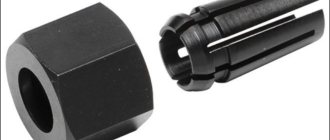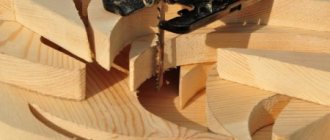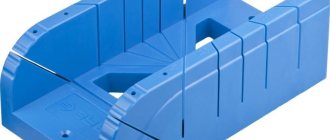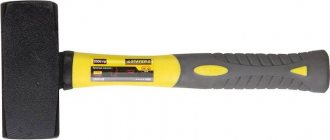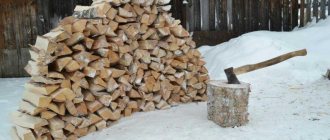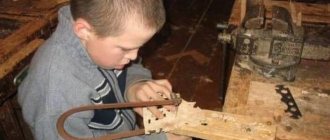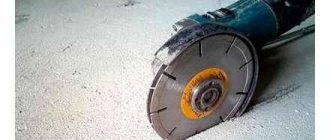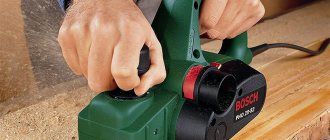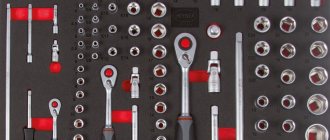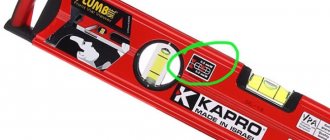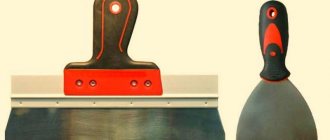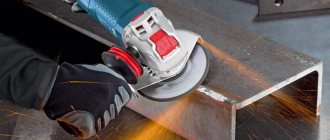The rule for plaster belongs to the measuring types of instruments that are used at almost all stages of repair and finishing work. The main purpose of this device is to maintain high precision when plastering walls and leveling the floor when screeding it with concrete. Its design is quite primitive - a metal product of rectangular shape and great length. However, a simple design does not mean that this tool is also easy to use. How to use the building rule is mostly asked by novice workers or home craftsmen, because plastering walls is a rather complex and responsible process that requires adherence to a certain technology.
Rule for plastering walls - what is the tool
The first rule was made of wood, for which smooth wooden slats were used. The disadvantage of such devices was the absorption of moisture, which contributed to rapid wear of the tool. As a result, a new type of devices appeared, which began to be made from aluminum alloy. Why aluminum and not steel? There are several determining factors for this:
- Aluminum is not subject to corrosion, so the structure of the workpiece remains smooth over a long period of operation and does not rust.
- Weight - compared to ferrous metal, aluminum is several times lighter. This not only makes the device easier to use, but also allows it to be used to remove large amounts of excess mortar when plastering walls.
The name of this tool comes from the synonym “sample”, used to compare with something or do something. Looking ahead, it should be noted that such tools come in different types, but the simplest is the device, which is a flat aluminum strip with an acute angle on one side (in the form of a trapezoid). Initially, such devices were used to check for dents and bulges on various surfaces, but later they began to be used when plastering walls and screeding floors.
This is interesting! One of the important characteristics of a tool is its level of rigidity. The higher the length of the device, the greater the thickness of its walls, and, accordingly, the strength.
Purpose of the tool
The plastering rule is the most convenient to use and has two main functions:
- Control of surface evenness.
- Leveling the mortar of floor screed or on walls.
Initially, the rules were made of wood, but in fact it was disposable, since the wood quickly absorbed moisture and became deformed. The plastering rule began to be actively used after 2000, when builders realized that this tool was much more practical, since it could be used several times, despite the fact that its price was slightly higher than its wooden counterpart.
Scope of application of the device
The main area of use of this type of tool is the construction sector. It is an almost indispensable device (practically, since a long bubble level can be used instead) when leveling solutions applied to the surface of a wall when plastering it. This device is no less in demand when pouring concrete on the floor, when in the end it is necessary to obtain the most even surface possible. However, this is not all types of work for which the building rule applies. It is also used to solve the following problems:
- marking - when it is necessary to draw a straight and even line of great length;
- emphasis when cutting glass - how to use a glass cutter, and how important it is to use straight metal strips, you can read here;
- an auxiliary tool when determining the level of surface slope - small bubble levels are not suitable for determining the evenness of large surfaces. In order not to buy a long level, you should use an auxiliary tool - a rule;
- installation of beacons for subsequent plastering of walls;
- level when laying tiles - unevenness is determined by the presence of a gap between the surface and the edge of the tool;
- ruler when working with a construction knife or pencil.
When performing any type of construction work, this type of tool will always be useful, because its main advantage is the perfectly flat plane of the sides. It should be noted that building regulations come in different sizes, so when choosing this type of tool, you must first determine the size of the room.
This is interesting! The most popular models of the rules are devices with a length of 1.5 and 2 meters. Their maximum length is up to 3 meters.
Although a flat wooden slat or a long level can be used to level the liquid solution, the work is usually more comfortable and efficient. This is due to the specific design of the tool, where there is an acute angle that should be used to remove excess solution. Separately, it is worth noting the low weight of the device, which eliminates not only the fatigue of the master during long-term work, but also the possibility of removing excess plaster.
A perfectly flat plane allows you to evenly distribute the mixture on the surface of the wall or floor. This is achieved by passing the rule over the surface of the liquid solution, cutting off the excess amount of the composition. The consequence of this procedure is to obtain a flat plane that can be used for laying tiles, laminate or other types of building materials.
The rule is more often used during construction and repair work. However, the tool is also in demand among craftsmen involved in the production and assembly of furniture. Carpenters use tools to end up with straight pieces of wood.
This is interesting! An undeniable advantage of modern rules is their long service life. After all, aluminum is not subject to corrosion, like metal, and does not deform from moisture, like wood.
Why do we need a rule?
The process of leveling and finishing walls with building mixtures seems quite simple when you observe the work of a professional from the outside. The prepared composition is thrown onto the wall and leveled so that at the end of the process the surface appears perfectly flat and smooth, without dents or bulges. The quality of work is checked using the same rule. They apply it to the wall and see if there are any gaps left between the treated surface and the working edge.
Interesting! According to a legend that has come down to us from the dashing nineties, the customer, checking the quality of finishing work, inserted large bills into the gaps found and counted their quantity. At the end of the “test” the amount received was deducted from the swindler’s salary.
Despite its simplicity, the device is a very functional device. It can be used to perform the following operations:
- leveling construction mixtures applied to the surface being treated;
- checking the plane of the wall;
- marking the surface to be leveled;
- the use of a perfectly flat surface of the body on which the building level is installed.
The main function remains leveling the construction mixture over the surface being treated. For this purpose, it has a perfectly flat working surface. By pressing it against the wall or floor and grabbing the solution, pulling it along the plane, the master levels the plane of the wall or floor. In this case, the holes and depressions are filled with a plastic composition. Excess solution is cut off with a sharp edge.
After the solution has hardened, the treated surface is ready for finishing:
- high quality painting;
- tile or wallpaper sticker;
- sticking linoleum or laying laminate (parquet boards).
Today, not only professional finishers, but also homeowners who carry out home renovations with their own hands have in their arsenal a set of slats of various lengths and profiles.
Types of building rules and advantages of their application
If the main tool of a carpenter is a hammer, then the rule is the main tool of a plasterer. Moreover, to effectively perform work, it is important to use not one tool, but at least several. The rules are produced in different types, which was done specifically to facilitate their use, as well as expand the range of work performed. Each type of device has characteristic differences, due to which they are used to carry out certain types of work.
Building regulations classify the design into the following types:
- h-shaped;
- trapezoidal;
- corner;
- rectangular;
- toothed;
- combined.
To find out which type of tool is best suited for the job at hand, it is necessary to consider the features of each type.
H-shaped tool: purpose and application
The h-shape rule is characterized by simplicity of design and light weight. Reducing its weight is achieved by manufacturing the tool from thin-sheet aluminum alloy and a minimum number of stiffeners. Light weight is both an advantage and a disadvantage. The advantage is the ease of performing the work, but the disadvantage is their limited capabilities.
The special design of the profile of this rule simplifies its operation, since the protrusion acts as a handle, through which the device is conveniently grasped by hand. It is intended for plastering walls (not suitable for floors) using light solutions, which include gypsum. It is least suitable for working with cement mortar, since the possibility of profile deformation under the influence of heavy loads cannot be ruled out.
The presence of one cutting edge allows you to effectively remove undercuts that arise when the solution is applied to the surface. Due to its low strength, the tool is only suitable for working with light gypsum mixtures. It is often used by home craftsmen when performing one-time jobs.
This is interesting! The handle design may have other options, as shown in the photo above.
Voting for the best building code
What building code would you choose or recommend?
Aluminum rule, H-shaped, 1.5 meters long
1.19 % ( 1 )
Aluminum rule, h-shaped profile 1 meter long
2.38 % ( 2 )
Long rules (from two meters)
4.76 % ( 4 )
Aluminum rules incorporating a steel insert into the design
4.76 % ( 4 )
Aluminum rule with reinforced edge
1.19 % ( 1 )
Rectangular rule (anodized) with a level and handles
11.90 % ( 10 )
Combined building code model
14.29 % ( 12 )
Corner fixture
8.33 % ( 7 )
Rectangular rule
4.76 % ( 4 )
Aluminum rules with integrated steel edge
27.38 % ( 23 )
Cog rule
0.00 % ( 0 )
H-shaped fixture
4.76 % ( 4 )
Trapezoidal rule - distinctive advantages
The trapezoidal rules have a more rigid design, therefore, compared to the previous version, they are more popular and in demand. They can be used for work not only on plastering the internal and external walls of a building, but also for leveling heavy mortars. Due to the wide range of work that can be performed by the device, it is also called universal. The acute angle of the trapezoidal rule is designed to remove the resulting influx of solution.
Compared to h-shaped devices, such devices are more expensive and heavy. The internal cavity of the trapezoidal profile is empty, which was done specifically to reduce the weight of the tool. The rigidity of the structure is achieved precisely due to the geometric shape of the profile, and an acute angle is the strongest. It can also be used for drawing lines or as an auxiliary tool when working with a construction knife or glass cutter.
The back (called the heel) is the handle, and provides a good rest for the hands. To strengthen the structure, the internal cavity is filled with a round tube (one or two) running along the entire length. The weight increases slightly, but the level of rigidity increases several times. Typically, long devices have this design.
This is interesting! Trapezoidal models can have grooves on both sides, the main purpose of which is to more conveniently hold the tool in the hands.
Lighthouses.
The orientation strips are fixed in the corners (not tightly) and near the slopes (doors, windows). The distance between them depends on the width of the wall, but cannot be less than the length of the rule for leveling the plaster.
Lighthouses have different designs and materials:
- Wooden. Wood has a significant drawback - instability of geometric shape. The tree quickly deforms. It is poorly applicable in “wet” work.
- Metal. Galvanized steel beacons are a tin profile. It does not swell when exposed to water. But it has its drawbacks: the profile is somewhat more expensive than wooden slats, it is quite thin (it is easy to bend).
However, plastering on beacons is usually done using a profile.
- Bricks, tiles. Small pieces of brick, chipped tiles, and stones can be used as reference points. They are fixed to the wall in a given plane. They are not so convenient and are a solution in a situation where it is not possible to install solid slats.
- Building mixture. Small fragments of solution. They are installed over the entire working surface at a distance convenient for work. True, the work becomes more complicated, the quality of plastering is lower. Therefore, it is used only in premises with low requirements (garages, outbuildings).
Driven nails, stretched ropes, etc. are also used. These are not professional solutions. The easiest way to plaster walls is usually along profile guides.
The rule with a rectangular profile shape: in what cases is it applied?
For their work, masters also use rectangular rules, which are almost completely reminiscent of bubble levels. Some models may have a built-in water flask, which allows the tool to be used to control the plane. A distinctive feature of such products is their high level of rigidity. It is for this reason that they are used to level the mortar when screeding the floor.
The high degree of rigidity of the rule is an advantage, but due to its design, it is not recommended to use the tool for plastering walls. The reason is that it is inconvenient to work in a vertical plane. The wide parts of the ribs do not allow you to see the clearance when checking the level of surface evenness, therefore the device is not intended for such work.
This is interesting! When using a rectangular rule with a bubble capsule, it must be taken into account that before determining the angle of inclination, the instrument must be adjusted. After all, when the rule is used for its intended purpose, the accuracy of the readings is violated. This information is also useful when selecting a rectangular rule with a bubble level feature.
Checking the surface with a rule and level
Surface testing carried out using the rule allows for some inaccuracy. To minimize such errors, it is recommended to use a building level at the same time. This tool is used together with the rule in the following way: it is applied to the edge of the rule, which allows you to simultaneously check the quality of the finish horizontally and vertically. Of course, using two tools at once brings a number of inconveniences for the master. In addition, the data obtained is not always reliable.
Fortunately, today in stores there is a more convenient tool for taking measurements - the rule with a level. It differs from a conventional measuring device in that it already has built-in measuring cones. Using it is as simple as the usual rule: you just need to attach the guides to the plane, and you will see the exact indicators that interest you. Often using such a tool is much more convenient than even the usual metal rule.
Angle rules and the importance of their application
Another type of rule is the angular one, which looks like an ordinary square. However, a distinctive feature of the corner device is the trapezoidal profile shape. The angle between the two bases is 90 degrees, and such a device is used for plastering and leveling the internal corners of rooms.
The tool can be equipped with a comfortable handle that connects the shoulders of trapezoidal bars that form a right angle. Such a handle not only has a positive effect on the ease of use of the tool, but also increases the level of rigidity, eliminating the possibility of skewed corners.
Devices of a similar configuration are used by plasterers and craftsmen who are engaged in finishing work. Moreover, they are applicable not only for internal, but also external work. Some even use them instead of a square, but it is important to take into account one feature - the angle rule does not have a degree of accuracy, so it is not suitable for critical work.
This is interesting! Unlike all types of rules, corner devices cannot be called an indispensable type of tool. Craftsmen who professionally plaster walls use such devices extremely rarely, and often only to control corners. However, for beginners and home craftsmen, such a device is a useful find.
How to check the evenness of a wall?
In order to check how smooth the wall is, you need to use the rule for plaster. It is advisable to use a type with a level, this will help you make corrections right away. To detect unevenness on the wall, run a tool along it. If a gap becomes noticeable somewhere, it means the wall is curved. Editing must be done over the entire surface of the wall.
The built-in level will help you control the slope of the wall. Leveling is carried out on wet plaster, cutting off its excess. In order to do this smoothly, it is necessary to set up special beacon slats in advance. They are determined using a building level, after first finding the ideal plane. The quality of plastering as a whole depends on how smoothly the beacons are installed.
https://www.youtube.com/watch?v=iB9gNVpnoac
The toothed rule: when does it apply?
A separate type of rule is gear. The profile shape has an H-shaped design, but a distinctive feature is the presence of teeth at the edge. Its main purpose is to apply a plaster-adhesive composition, onto which tiles or other types of facing materials are subsequently glued.
It has the same purpose as a notched spatula, but differs from it not only in the design of the handle, but also in size. Allows you to cover a large area in one pass, thereby speeding up the work.
This is interesting! It has identical disadvantages as the h-shaped rules, and can additionally be equipped with water capsules for use as bubble levels. With their help, the master can control the layer of solution applied to the surface.
Criterias of choice
One of the main issues that every novice home craftsman should pay special attention to is related to the choice of building rules. In principle, there is nothing complicated here . You just need to know what parameters to pay attention to.
Profile form
First of all, you should pay attention to the profile shape of the product you are purchasing. This is very important, since this characteristic directly determines the strength of the tool. Rules for plastering walls are available in two versions:
- Trapezoidal. It is the rules of this form that can most often be found in construction stores. They allow you to perform many operations, including those with high loads on the product.
- H-shaped. A rarer option, which is used mainly for interior decoration and is not intended for finishing surfaces with heavy compounds.
Stiffening rib
One of the main requirements that all rules for plaster must satisfy is high strength. Therefore, when choosing this tool, you need to pay attention to its design features. Traditionally, this device consists of two tubes, on which the tool’s resistance to loads and deformation during operation depends.
Geometric correctness
If the rule is of the wrong shape, then it will be very difficult to guarantee high-quality finishing work. Therefore, when studying different models, pay attention to the fact that the working end of the product is absolutely flat.
Combination Rule: Today's Best Tools
For starters, let's look at another type of plastering rules - combined ones. These are the most advanced rule models to date, which have only positive reviews. They combine the design of h-shaped and trapezoidal devices, and have the following appearance, as shown in the photo below.
The advantages of such a combined tool include:
- High degree of rigidity, which is even higher than that of rectangular models.
- Ease of use - achieved due to the presence of a comfortable handle.
- Reduced weight due to the thin-walled material from which the device is made.
- The working part has a long service life, as it does not wear out with regular use.
- Suitable for any job.
Another important advantage is the price, which is not much higher than the trapezoidal product. If you are engaged in professional finishing work, then the combined type of rules will be the best choice.
Best Low Cost Building Rules for Plaster Coat Applications
The trapezoidal version of the building rule is the most popular and inexpensive. It is suitable for external and internal decoration of the selected object. Even if you have to cope with plasters that differ in severity, it perfectly implements the task. Most importantly, the strength of such a tool is its main advantage.
Trapezoidal version of the building rule
Short length building codes can be considered low-cost options. For example, in online stores you can find products 1 m long costing less than 400 rubles, which is attractive to the buyer. Such practical designs are made of high-quality materials (aluminum) of increased strength, which is why they deserve special attention. They are suitable for leveling not only vertical, but also horizontal surfaces. Many instruments are distinguished by the presence of a special plastic plug. It helps prevent construction mixture from getting inside the device.
For large volumes of work it is impossible to do without inexpensive aluminum rules. They are distinguished by their low weight, durability in use, the edge of this modern rule does not wear off even with active use. The surface of the product retains its perfect appearance, without damage. Options for products made of aluminum, but with a working edge made of steel, have the advantage - the edge prevents the possibility of bending the selected product. The only advantage of this product is its high cost due to the combined materials.
Rule made of aluminum, but with a working edge made of steel
The conclusion that can be drawn is that every person should have at least one construction rule of excellent quality.
Rule length - what you need to know about it
Length rules are available in different sizes, but the most popular are models for 1, as well as 1.5 and 2 meters. The length of the longest product is 3 meters, but it is difficult to work with it alone. In addition to long ones, there are also short devices that are used to perform specific work. And every professional master must have at his disposal not only long, but also several types of short rules.
Length affects the performance of the tool. However, it is not necessary to use long rules in all cases, for example, if the walls in a small storage room are plastered. When choosing length rules, you need to consider the following:
- The large length of the device, although it helps to increase the speed of work, also complicates the process itself, so the occurrence of defects is possible.
- The possibility of applying long rules is limited by the size of the room where the work is planned to be carried out.
- Such a parameter as rigidity suffers from their large length.
- The cost of long-length products is much higher than short models.
- It will be problematic to work with a rule whose length is more than 2 meters on your own, so you will need an assistant.
If you can’t decide on the choice of tool length, then you should choose the most popular models with a length of 1-1.5 meters. This will be enough for beginners and home craftsmen. The optimal tool for a professional is a rule of 1.5-2.5 meters.
Rating of quality building regulations
h-shaped
5.Petrocon Mon
Product of a Russian company. A simple h-shaped product - two-watt. Material – aluminum. The manufacturer did not reinforce the working edge with steel. Therefore, the tool is only suitable for leveling light building mixtures onto walls. The average price of the model is 473 rubles.
Petrocon Mon
Advantages:
- light weight;
- comfortable grip;
- affordable.
Flaws;
- low rigidity;
- The aluminum working edge wears out quickly.
4.Stayer 10745
H-shaped construction rule from a well-known German manufacturer. Considering its light weight, it is easy to work with and your hands do not get tired. The instrument lacks rigidity. It can be easily bent in your hands. But its purpose is to work with light solutions. It is not suitable for leveling cement plaster. The average price is 529 rubles.
Stayer 10745
Advantages:
- lung;
- made of high quality aluminum;
- affordable price.
Flaws:
- insufficient rigidity.
3.Gigant Alrh 15
The tool is made in Russia. Made of aluminum, H-shaped profile, length – 1500 mm. The manufacturer has provided the product with a sufficient number of stiffening ribs, giving it decent strength. Dimensions of the rule: 1500x115x30 mm, weight - 1140 grams. It is used for leveling walls and installing floor screeds. The average price is 555 rubles. According to buyers, this is the best value for money.
Gigant Alrh 15
Advantages:
- ease;
- good rigidity;
- affordable price.
Flaws:
- not identified.
2.Our tool 020613-080
The Russian tool company is represented in the review by the h-shaped spatula rule. This is a steel structure encased in an aluminum profile. The length of the device is 800 mm, weight – 1000 g. The product is quite rigid and is used when leveling large area walls. Average price 2021 rubles.
Our tool 020613-080
Advantages:
- rigidity;
- ease;
- wear resistance.
Flaws:
- not identified.
1.Armero 1.5 m
Model from a Spanish manufacturer. The h-shaped rule for finishing walls with putty compounds. The profile has an original configuration and increased rigidity. Lightweight, with a comfortable grip. It works well with large areas. Your hands don't get tired. The company produces rules 1.5 long; 2.0 and 2.5 meters. The price is specified by the seller when placing an order.
Armero 1.5 m
Advantages:
- comfortable grip;
- increased rigidity;
- light weight.
Flaws:
- not identified.
Trapezoidal
Stayer Master 10723
The review opens with a model from a German manufacturer. Trapezoid with aluminum working edge and stiffening rib. Product length – 1500 mm. The edges on both sides are closed with plastic plugs. The product is quite light and does not tire your hands. The length is convenient for productive work on large areas. The rigidity is sufficient for leveling heavy and light mortars on walls and floors. The average price is 208 rubles.
Stayer Master 10723
Advantages:
- lung;
- hard;
- inexpensive.
Flaws:
- not identified.
4.Zubr 10721
Aluminum trapezoid with one stiffener, 1.5 meters long, 9.5 cm wide, 2.0 cm thick. Designed for leveling walls and floors. The rigid design allows you to work with mortars of varying weights and mobility. The sharp working edge does an excellent job of identifying unevenness on the walls and cutting off excess mortar. Two plastic plugs at the ends of the product will protect the craftsman’s hands from injury. The average price is 529 rubles.
Bison 10721
Advantages:
- comfortable and durable body;
- rigid structure;
- reasonable price.
Flaws:
- not identified.
3.Matrix 89620
Option of a famous German company. Aluminum body of trapezoidal shape with two stiffening ribs. Dimensions: 1500x100x20 mm. Its increased rigidity allows it to be used for plastering work with heavy lime-cement compositions, leveling with light finishing putty, and used as a support for installing a building level. A sharp edge will help identify the presence of unevenness on the walls. It is enough to attach the product to the wall and check whether there are gaps between it and the surface to be leveled. The average price is 590 rubles.
Matrix 89620
Advantages:
- comfortable;
- hard;
- inexpensive.
Flaws:
- not identified.
2.Armero A 131/150
Aluminum Spanish rule. Trapezoid with stiffening rib, length 1.5 meters, weight 0.9 kg. The grip is comfortable. The case is hard. With such a product you can level plaster and putty compounds on walls, screed floors, and check walls for unevenness. There are plastic plugs on both sides. The average price of the product is 735 rubles.
Armero A 131/150
Advantages:
- durable, rigid body;
- light weight;
- affordable price.
Flaws:
- not identified.
1.Fit 09019
Trapezoid from a Canadian manufacturer. Aluminum body with stiffening rib. Length 2500 mm, provides wide grip and high productivity. Aggressive environments of working trains do not cause harm to the hull. The purpose of the model is to level plaster and putty compounds on walls and install floor screeds. The product is durable, ergonomic, lightweight (1.2 kg). The average price is 779 rubles.
Fit 09019
Advantages:
- ease;
- rigidity;
- ergonomics;
- affordable price.
Flaws:
- not identified.
Rectangular
3.Santool 020621
Multifunctional device from a Russian manufacturer. By purchasing this model, the buyer receives both the rule and the level “in one bottle”. The product has two slotted handles for comfortable grip and two “eyes” - built-in bubble level flasks. Case material – aluminum. The ends are protected with plastic inserts. The model was developed for screeding floors and plastering walls along beacons. The absence of a sharp working edge does not allow finishing putty compounds to be leveled on the wall. The average price is 991 rubles.
Santool 020621
Advantages:
- strength;
- two comfortable handles;
- bubble level.
Flaws:
- not identified.
2.Matrix 89639
Convenient multifunctional model from a German manufacturer. In addition to its main purpose, it can be used as a level. For this purpose, two “eyes” of bubble levels are installed in the aluminum case to check horizontal and vertical surfaces. The profile is rectangular. For user convenience, there are two slotted handles. The ends are closed with plastic plugs. The average price is 1,489 rubles.
Matrix 89639
Advantages:
- quality material;
- with level function;
- number of eyes;
- inexpensive.
Flaws:
- not identified.
How to use the rule: detailed description for different instrument options
The question of how to correctly use the rule has been relevant for a long time. And they are asked mainly by novice workers and home craftsmen. Knowing what types of rules there are, we should move on to consider the issue of their correct use.
First, let's look at the general instructions on how to use the rule when plastering walls. The first step is to install beacons if the surface requires leveling. Beacons do not need to be installed if the wall is flat and you only need to plaster it. The beacon installation interval is selected depending on the length of the rule used. It should be such that the tool overlaps them on each side by a distance of 5-10 cm. The reserve is needed in order to be able to “add” the mixture (carry out wave-like movements).
After installing the beacons, you need to wait until the mixture on which they are planted hardens. Using the rule, it would not be superfluous to once again check the compliance of the plane of each beacon. The process begins with the fact that the wall must be moistened with water (it must first be treated with soil liquids to increase adhesion properties). The mortar is applied using a spatula or trowel. If you are a beginner master, then you should not immediately cover a large volume. Select a small area to practice on.
Further actions are performed in the following order:
- When the mortar is thrown onto the wall, you can proceed to leveling it. Now we will not consider the consistency of the solution, since you can read about this in other articles. The main goal of this section is to learn how to use construction rules when plastering walls.
- The next step involves applying the rule. It is used to “pull” the solution. Moreover, the direction of pulling is from bottom to top, but not vice versa.
- It is not only possible, but also necessary to carry out broaching in the horizontal direction.
- When pulling, spaces are formed that are not filled with solution. The solution should be added to these places using a spatula, and the leveling procedure should be repeated again.
- After the entire wall has been processed, you will need to dismantle the beacons and cover their locations with mortar.
This completes the process of plastering the walls. However, now we will consider in detail how to correctly use the rules of different types:
- h-shaped rule - due to the large size of the shelf, it is very convenient to draw the solution immediately after its application. Excess solution accumulates on the shelf, after which it should be re-applied to the surface to be plastered in places where “islands” form. When working, keep the h-shape rule perpendicular to the surface. When applying the solution from the tool shelf, it is necessary to make a slight slope. Work with this rule continues until large areas are sealed, after which it is recommended to switch to using a trapezoidal device.
- Trapezoidal - used when the mortar on the wall has already frozen. With its help, the remaining defects are eliminated. To do this, the solution can be applied directly to the edge of the tool and pulled along the surface, holding it perpendicular with a slight slope. The angle of inclination should be selected individually, depending on the specifics of the work. When leveling the solution, you should not put pressure on the rule, as this will lead to its temporary deformation, as a result of which the correct fit of the composition will be disrupted.
- Combined - eliminates the need to use the two rules of h-shaped and trapezoidal. All of the above steps can be performed using a combination tool.
- Corner - it is used to seal corners. Moreover, it is recommended to do this first, having initially installed the beacons. The process is similar to that described above and does not present any difficulties.
Plastering walls using the rectangular rule is not carried out. This type of tool is used when screeding a floor with cement mortar. Actually, there is nothing complicated in this process, and the technology is identical to plastering walls. The video below describes in detail the process of how to work with the rectangular rule when screeding a floor.
The most important thing you need to know when plastering walls or pouring a floor is to choose the right tool. That is why it is recommended to first familiarize yourself with the types of devices in order to know for what work they should be used.
Especially for those who are looking for a way to plaster walls without using beacons, below is a video instruction. With its help, you can get the hang of plastering walls using the rule without first installing beacons.
The best manufacturers
A good tool is made by the best manufacturers. Let's get to know some of them.
Matrix
Trademark of the German company Matrize Handels GmbH. Its product range includes at least 3,000 models. Among them are tools used in construction and repair:
- locksmith;
- carpentry;
- measuring;
- car repair kits;
- cutting tools for various purposes and designs;
- various fasteners.
As for the company’s construction finishing products, professionals pay tribute to its brushes, rollers, brushes, spatulas, trowels, trowels and, of course, rules of various profiles. Popular models of trapezoidal two-pieces are in high demand among experts.
JET
The American tool company JET Equipment & Tools was founded in 1958 in Seattle. The company became famous for its wood/metalworking equipment and even took a leading position in the United States in this market. Hand tools are not her main focus. Nevertheless, the popularity of JET models among professionals is high, and their quality matches the manufacturer’s reputation.
FIT
A trademark of the Canadian company of the same name, Finch Industrial Tools Canada Inc. The main direction of its activity is the production of hand-held power tools. We also produce hand tools for finishing work, including construction rules of various profiles and sizes. FIT is a quality product at a reasonable cost.
Bartex
Manufacturer from China. It has been on the market for quite a long time and has managed to gain popularity among buyers. The assortment includes many items for plumbing, carpentry and finishing purposes. All products are manufactured by large Chinese companies. The quality is at the level of world standards, the prices are budget.
Kraton
One of the domestic manufacturers of equipment and various equipment. For 18 years, the company has been pleasing its consumers with high-quality products and a wide range. Its abrasive wheels, compressor units, etc. are especially valued by professionals. The construction range includes everything needed for professionals, including spatulas, trowels and rules. All products are of high quality.
Bison
Russian manufacturer of professional tools. On the market since 2002. Today it is one of the leading domestic companies in this business. Zubr products are in demand among professionals and do-it-yourselfers. All products undergo serious quality control and meet the requirements of GOST and international standards. All models are issued with a warranty card valid for five years.
Biber
Manufacturer from Germany. Formed in 1950. The buyer knows this brand for its cleaning and care products for textiles, and products for making household work easier, including for apartment renovation. The European consumer appreciated the quality of its spatulas, rollers, brushes, paint containers and building regulations. Production facilities are located in Europe and China.
Stayer
The owner of the trademark is the German manufacturer – Kraftool. Our compatriots became acquainted with its products in 1999. The instrument with the Stayer brand was distinguished by its high quality and stylish design. Product production is deployed on modern equipment of factories in Germany and the Czech Republic, China, Taiwan and Malaysia. The manufacturer has developed four main lines of tools:
- for domestic use, models marked Standard are produced;
- home craftsmen are intended for products marked Master on the body;
- professional instruments are sold marked Profi;
- universal models, marked Universal.
The company annually develops new models, uses modern technologies, materials and innovations.
Our tool
The brand belongs to the Russian company Santool. The tool is created using a unique production technology, using components from the world's best manufacturers. Inexpensive products of this brand can be found at many construction sites in Russia and the CIS countries.
Armero
A new company on the tool market has Spanish roots. Buyers like models from Armero for their modern materials, ergonomics, and bright colors.
Interesting! "Armero" is translated from Spanish as "Armorer". Once upon a time, a company produced weapons.
Today, its specialists recreate and support the traditions of Spanish gunsmiths, creating high-quality instruments, the possession of which requires skill and gives aesthetic pleasure.
The market is saturated with quality tools. The number of excellent manufacturers cannot be counted. In order not to make mistakes when choosing a suitable model, you should carefully study the descriptions and characteristics of several products, listen to the advice and recommendations of experienced craftsmen, and consult a seller in a specialized store. By collecting as much information as possible about the product, it will be easier to decide which company is better to buy the product.
Choosing a building code: basic recommendations
The choice of rule begins with inspecting the tool for its integrity and the absence of defects on the surface. Warping, chips and other types of deformation indicate that the product was manufactured using low-quality equipment. It is not recommended to purchase such devices, since with their help it will not only be difficult to achieve a positive result, but there is also a high probability of damage to the devices during operation.
Below is a list of recommendations that should be considered when choosing a rule to work with:
- It is recommended to choose trapezoidal products with a special groove in the design, which facilitates the operation of the tool when plastering.
- The presence of stiffening ribs - the more of them, the easier it is to work with the tool, and besides, the surface to be plastered will have fewer defects.
- Material of manufacture - the most popular are aluminum products, the advantages of which have already been mentioned.
- Dimensions - the easiest way to work is with rules that have a size of 1-1.5 meters, but for large volumes of work, it is not rational to use them. The choice of tool length should be approached individually depending on the size of the room.
- The presence of a level - the presence of a bubble with water will never be superfluous, and will only speed up the process of completing the work. However, there is one “but” - before using it, you need to check its correctness and make adjustments. You can find out how to adjust the spirit level here.
The price of such tools is not so high, so every master can afford to purchase them. The disadvantage of 2-3 meter products is the difficulty of transporting them, since a 3-meter bar will not fit into every passenger car.
To summarize, it should be noted that learning to use the rule is not difficult; it is more important to choose the right tool for the job. Of course, it will be difficult to get a flat surface the first time, and you will need to spend a lot of time learning, but once you get the hang of it, plastering the walls in your house or apartment will be a mere trifle.
Where can I buy
The easiest option is to visit a hardware store. Today, in any city there is sure to be a specialized retail outlet and more than one. In such stores you can look at, touch, thoroughly evaluate the product and choose what you need. It is advisable to visit the manufacturers' websites. All the information necessary for the buyer is published on their pages:
- news about what new products the manufacturer has released for sale this year;
- description and technical parameters of all models in production;
- price data for any model;
- addresses of stores where you can buy the company's products.
It happens that there is no time or desire to go shopping. Then you will have to use the second option - order goods online from an online store. Today this is done very simply. True, the buyer must be confident in the chosen store, otherwise problems may arise with delivery or quality of the goods.
